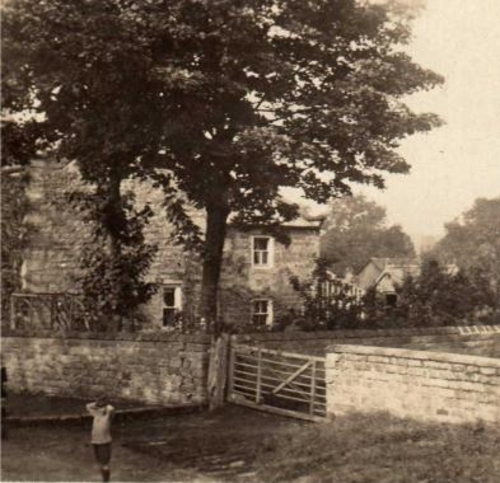Ashville
 (click on photo for a larger image in a new window)
(click on photo for a larger image in a new window)
Ashville and its adjoining property Ashley House may be buildings of some antiquity. They have an appearance suggesting they were constructed at different times - although they abut each other, Ashville is set back slightly from Ashley House and they are connected by a single vertical mortar joint. The windows of Ashley House were recently (January 2010) replaced but their predecessors were recessed and their frames partly concealed which is a form of construction found after 1775. Those of Ashville are more flush with the walls with exposed frames - a style found before 1725. Of course, the windows in both properties are likely to have been renewed from time to time and we cannot be sure that they conform to their original positioning. Nevertheless, the Inclosure Map of the 1770s shows some structure at this point in Church Lane and this may well have been one or both of these dwellings. The properties are both very clearly identified on the O.S. Map of 1853 and succeeding surveys.
Marks on the stone of the front elevation suggest that the present porch is a modern addition but the general appearance of the main house seems to accord with what was probably first built many years ago.
The property has been in the possession of the Addyman family since it was acquired from William Haxby in January 1930.
We have an old photograph, taken in 1915, showing the adjacent entrance to the agricultural land at the rear . . .
 (click on photo for a larger image in a new window)
(click on photo for a larger image in a new window)
Here is a modern photograph of the same view
 (click on photo for a larger image in a new window)
(click on photo for a larger image in a new window)
There are a number of references to this property in Book One "Villagers' Reminiscences" . . .
"According to various builders, who have been in the house to do electrical work, "Ashville" started life as a simple two-up, two-down cottage. Strangely, on the house deeds - kept safely by the solicitor - are the names of many of the past vicars of St. Thomas a Becket Church.[A note is added in the book indicating that research may establish the significance of the list but see
previous owners below.]. . .
Of course, there was no central heating, only what was called a 'side oven'. It was heated by a fire, kept on all night, stacked up with slack (coal dust) to 'keep it in', so that it was still burning in the morning, guaranteeing plenty of hot water. Next to the living room/kitchen was a small area with a sloping roof, where there were slabs for bacon, hams and the rest, which we had cured . . . In the bedrooms we had brass electric lights, to which string was attached for use during the night . . . I think that army personnel must have been billeted in the house, because there were dart holes in all the doors, which had to be replaced. They were such a mess . . . The famous day of the flood in July 1968, I was frantically trying to block up the front of the house, while firemen were pumping out the cellar - under which even now there is a well. And there was still an old pump in the living room when I came here . . . The well was found by workmen, who were encouraged by my husband to go on digging in the hope of coming upon some treasure trove! Needless to say, they were unsuccessful, so filled it in again".
(Monica Addyman)
Click here for information about
previous owners.
Return to main map
 (click on photo for a larger image in a new window)
(click on photo for a larger image in a new window) (click on photo for a larger image in a new window)
(click on photo for a larger image in a new window) (click on photo for a larger image in a new window)
(click on photo for a larger image in a new window)





